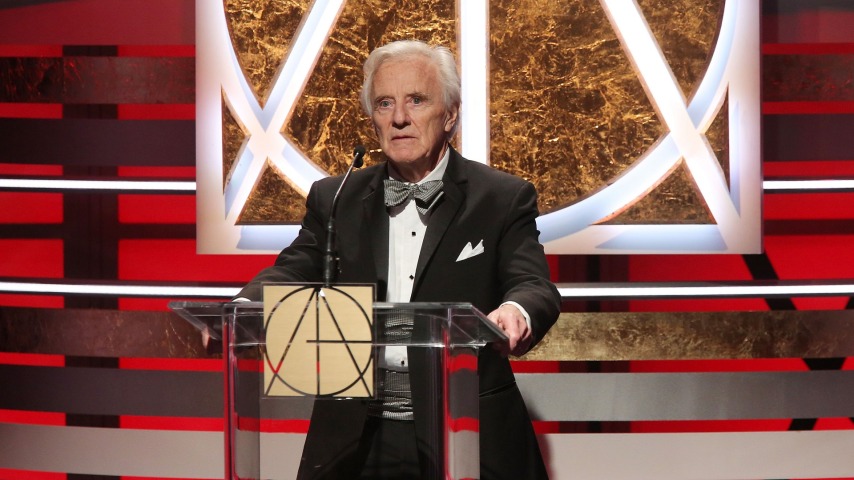Les Dilley has died. A two-time Oscar winner for his work as a cinematic art director, Dilley had his hands on some of the most iconic films of the 20th century—sometimes literally, as one of the people who physically built R2-D2, and helped push the boulder that chases Harrison Ford at the beginning of Raiders Of The Lost Ark. With a career that saw him build sets and manage practical art effects for George Lucas, Steven Spielberg, Ridley Scott, James Cameron, John Landis, and more, Dilley was a highly respected craftstman whose work was integral to the visual identity of several of the biggest blockbusters of all time. Per Variety, Dilley died on Tuesday, May 20 from complications from Alzheimer’s Disease. He was 84.
Born in Wales, Dilley came up in the art department of various British productions, working (uncredited, at times) as a draftsman and assistant art director. He scored his first official gig in the art director job in 1973’s Richard Lester adaptation of The Three Musketeers. (Art direction on film sets is usually a more logistical and practical job than the more design-minded work done by production designers, incorporating aspects of management, set-building, and other practicalities of actually getting a movie made.) Working with fellow art director Norman Reynolds, and under production designers John Barry and Roger Christian, Dilley was recruited in the late ’70s to be the on-set art director for George Lucas’ Star Wars, where he was responsible for executing some of the film’s most memorable visuals, including helping to create the sandcrawler, Luke’s landspeeder, and one of the physical builds of R2-D2. (Assembled, reportedly in secret, due to worries that remote-control units being developed would fail.) The four were rewarded when the film became an unprecedented blockbuster, each earning an Oscar for helping to bring George Lucas’ distant galaxy to life.
Star Wars kicked off what was a frankly ludicrous run of art designer jobs for Dilley; his next several credits include Superman, Raiders Of The Lost Ark, Alien, The Empire Strikes Back, An American Werewolf In London, Never Say Never Again, and Legend. (He won a second Oscar for Raiders, and was nominated for Alien and Empire.) In the mid-80s, he moved up into the production designer role, notably with James Cameron’s The Abyss. (Which scored him another Academy nomination.) His career branched out from there, often into the world of comedies, but also horror, action, and other styles of film; production designer credits from the next 20 years run the gamut from Casper to Exorcist III, hitting Son Of Mask, Deep Impact, What About Bob, Black Knight, and more along the way. Dilley retired in 2017, having spent the last few years of his career serving as production designer on award-nominated children’s TV series Teacup Travels, creating fantastical historical worlds for its child adventurers to traverse.
In 2020, Dilley was honored with an Outstanding Contribution to Film and Television Award at the British Academy Cymru Awards, the Welsh branch of the BAFTAs. Many of the directors who worked with him across his career gave testimonials for the event, including George Lucas, Ridley Scott, and James Cameron, who said of Dilley that, “Certainly, no one in production design deserves this award more than Les,” praising him for his work bringing the world of The Abyss to life under incredibly difficult conditions. In an interview from around this time, Dilley—who could be gleeful in interviews when discussing practical effects he’d brought to bear on an art problem on a film—talked about the changing nature of effects work and production design in films as technology has advanced, noting, “The thinking and engineering done through CGI comes from a different skillset than the one I was trained on, so of course I am less enamored with it compared to old-school techniques. Still, I recognize that our profession is always evolving and moving forward with the times. Ultimately, I feel so lucky to have had a career in the motion picture and television business when I did, and in retrospect I wouldn’t have changed a thing.”


 Keep scrolling for more great stories from A.V. Club.
Keep scrolling for more great stories from A.V. Club.